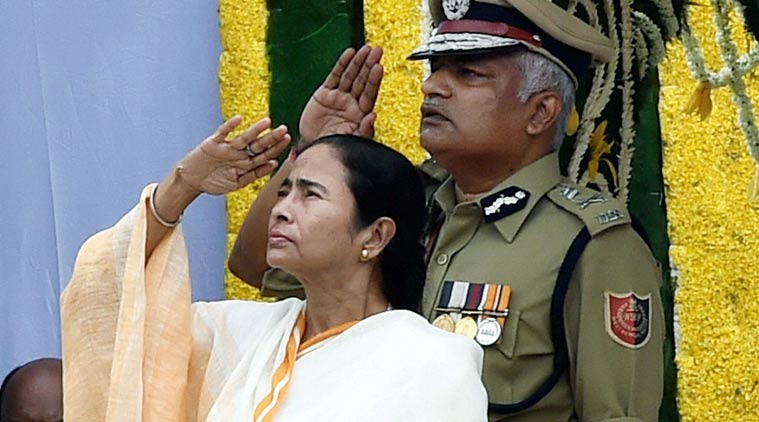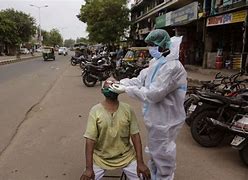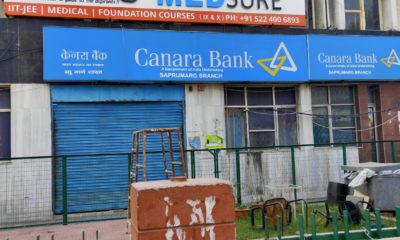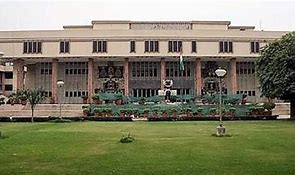Feature
Bengal Govt says ‘no’ to Center’s plan to celebrate Independence Day

Kolkata: The Bengal government has issued a counter-circular, ordering schools to ignore a central government circular that has prescribed a set format for Independence Day celebrations this year. Schools, instead, have been asked to carry on with their usual mode of celebrating the occasion like every year.
The ministry of human resource development issued a circular on August 7, asking schools to organise a set of programmes revolving around Independence Day. Four days later, on Friday, the West Bengal Sarva Shiksha Mission department issued a circular, asking schools to stop preparations for celebrating Independence Day in the manner suggested by MHRD.
“The feeling of patriotism cannot be forced down someone. It is a sentiment that is already there in all Indians. Schools in Bengal celebrate Independence Day every year by hoisting flags and holding various programmes. This year, too, they shall follow the usual practice,” state education minister Partha Chatterjee said, adding that, in Bengal, it was not only schools that celebrated Independence Day.
The MHRD circular asked every school to arrange a “Sankalp programme” from August 9 to August 30 near “Shaheed Smaraks” constructed as memorials to freedom struggle or war martyrs or those who have fallen to terrorism — or on school campuses. Schools should also have an oath-taking ceremony, where all teachers and students would have to vow to rid the country of the five problems of poverty, corruption, terrorism, communalism and casteism by 2022, when the nation would be celebrating 75 years of freedom.
“The ministry sent us a copy of the oath. This was supposed to be followed by a speech by a teacher or a guest and a student on how to rid our country of these vices,” a teacher of a city school said. Besides, schools would have to hold quizzes and painting competitions, where the theme would be India’s freedom movement, she added.
Now, however, everything looks like going back to the usual routine that schools have followed down the years. A senior Bengal school education department official said the state government was forced into issuing the counter-circular to preempt attempts by the BJP-led central government to “force patriotic sentiments down people’s throats when it already existed in their minds”.
“There was absolutely no need to issue the new circular on August 7. Schools have been celebrating the occasion with a lot of spontaneity and enthusiasm since 1947. What does the centre want to say, that we have been celebrating Independence Day wrongly all these years, or schools have not been celebrating this day till the BJP came to power?” the official asked.
A senior MHRD official, however, said the August-7 notice was just a suggestion to state governments and there was no compulsion to follow the instructions.
The BJP, too, protested against the state’s propensity to just oppose for the sake of opposition. “We will hold a press conference on Sunday. The Mamata Banerjee government has a tendency not to follow the centre,” state BJP president Dilip Ghosh said.
Educationists, however, have taken a dim view of the controversy. “It is the duty of students of every school to celebrate Independence Day. But students should do it in their own way. There should not be any directive. Schools and colleges anyway celebrate the occasion.
Now it appears that the central government is trying to make the celebrations mandatory and the state government is issuing another directive, saying it should not be mandatory. I believe both are wrong. An education institution is a social association and, in a democracy, a social institution cannot be dictated by political masters,” former Presidency College principal and educationist Amal Mukhopadhyay said.
Entertainment
Meghalaya Reserves Legalized Gambling and Sports Betting for Tourists

The State Scores Extra High on Gaming-Friendly Industry Index
Meghalaya scored 92.85 out of 100 possible points in a Gaming Industry Index and proved to be India’s most gaming-friendly state following its recent profound legislation changes over the field allowing land-based and online gaming, including games of chance, under a licensing regime.
The index by the UK India Business Council (UKIBC) uses a scale of 0 to 100 to measure the level of legalisation on gambling and betting achieved by a state based on the scores over a set of seven different games – lottery, horse racing, betting on sports, poker, rummy, casino and fantasy sports
Starting from February last year, Meghalaya became the third state in India’s northeast to legalise gambling and betting after Sikkim and Nagaland. After consultations with the UKIBC, the state proceeded with the adoption of the Meghalaya Regulation of Gaming Act, 2021 and the nullification of the Meghalaya Prevention of Gambling Act, 1970. Subsequently in December, the Meghalaya Regulation of Gaming Rules, 2021 were notified and came into force.
All for the Tourists
The move to legalise and license various forms of offline and online betting and gambling in Meghalaya is aimed at boosting tourism and creating jobs, and altogether raising taxation revenues for the northeastern state. At the same time, the opportunities to bet and gamble legally will be reserved only for tourists and visitors.
“We came out with a Gaming Act and subsequently framed the Regulation of Gaming Rules, 2021. The government will accordingly issue licenses to operate games of skill and chance, both online and offline,” said James P. K. Sangma, Meghalaya State Law and Taxation Minister speaking in the capital city of Shillong. “But the legalized gambling and gaming will only be for tourists and not residents of Meghalaya,” he continued.
To be allowed to play, tourists and people visiting the state for work or business purposes will have to prove their non-resident status by presenting appropriate documents, in a process similar to a bank KYC (Know Your Customer) procedure.
Meghalaya Reaches Out to a Vast Market
With 140 millions of people in India estimated to bet regularly on sports, and a total of 370 million desi bettors around prominent sporting events, as per data from one of the latest reports by Esse N Videri, Meghalaya is set to reach out and take a piece of a vast market.
Estimates on the financial value of India’s sports betting market, combined across all types of offline channels and online sports and cricket predictions and betting platforms, speak about amounts between $130 and $150 billion (roughly between ₹9.7 and ₹11.5 lakh crore).
Andhra Pradesh, Telangana and Delhi are shown to deliver the highest number of bettors and Meghalaya can count on substantial tourists flow from their betting circles. The sports betting communities of Karnataka, Maharashtra, Uttar Pradesh and Haryana are also not to be underestimated.
Among the sports, cricket is most popular, registering 68 percent of the total bet count analyzed by Esse N Videri. Football takes second position with 11 percent of the bets, followed by betting on FIFA at 7 percent and on eCricket at 5 percent. The last position in the Top 5 of popular sports for betting in India is taken by tennis with 3 percent of the bet count.
Local Citizens will Still have Their Teer Betting
Meghalaya residents will still be permitted to participate in teer betting over arrow-shooting results. Teer is a traditional method of gambling, somewhat similar to a lottery draw, and held under the rules of the Meghalaya Regulation of the Game of Arrow Shooting and the Sale of Teer Tickets Act, 2018.
Teer includes bettors wagering on the number of arrows that reach the target which is placed about 50 meters away from a team of 20 archers positioned in a semicircle.
The archers shoot volleys of arrows at the target for ten minutes, and players place their bets choosing a number between 0 and 99 trying to guess the last two digits of the number of arrows that successfully pierce the target.
If, for example, the number of hits is 256, anyone who has bet on 56 wins an amount eight times bigger than their wager.

























